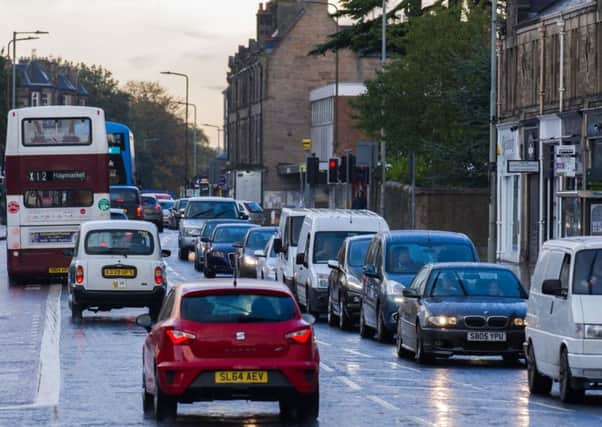Lorries, vans and buses face ban from polluted streets


Transport minister Humza Yousaf announced the move yesterday as part of a drive to clean up the air quality in the worst affected areas of the country. There are already about 200 low emissions zones (LEZs) in place across Europe and Mr Yousaf set out a timetable that would see similar schemes established in Scotland by the end of 2020.
The most polluted streets in Scotland include Glasgow’s Hope Street, St John’s Road in Edinburgh, the Seagate in Dundee and Aberdeen’s Wellington Road. The areas around these streets could be among the first to be given LEZ designation in Scotland. Buses, lorries, vans and even taxis that break emissions guidelines are likely to be among the vehicles affected.
Advertisement
Hide AdAdvertisement
Hide AdMore than 2,000 deaths a year in Scotland are caused by exposure to fine particulate air pollution, making it a far more prolific killer than road traffic accidents. The National Low Emission Framework (NLEF) published by Scottish ministers last year aimed to allow local councils to “justify” and set out the business case for measures to tackle air pollution, such as LEZs.
On the continent, drivers who enter these areas in prohibited vehicles face fines or points on their licences.
Scottish ministers are looking at this option, along with a “charging” scheme in LEZs for high pollution vehicles.
Ministers have studied the situation in Germany where dozens of cities have a system which sees vehicles forced to display green, amber and red stickers across their windscreens.
Advertisement
Hide AdAdvertisement
Hide AdOnly those with a green sticker are allowed in the LEZ areas in Berlin, Frankfurt, Hanover and Stuttgart, among other cities.
Mr Yousaf unveiled a “timescale” for implementation of similar schemes in Scotland in a parliamentary answer yesterday.
He said potential sites will be looked at in mid-2017, with decisions being taken on the schemes by the end of 2018.
This will mean the “implementation and operation” of the first schemes by 2020.
Advertisement
Hide AdAdvertisement
Hide AdMr Yousaf said: “This timeline for delivering the NLEF is ambitious and we will ensure continuous engagement with all stakeholders at each stage, on evidence gathering, analysis, and the detail of the NLEF options, including low emission zones, as we progress.
“Our approach is aimed at maximising partner and public buy-in and ensuring that those who have to adjust their actions and activities are allowed to do so.
“This pragmatic approach is essential to deliver air quality improvements, whilst recognising the legitimate needs and expectations of local communities.”
Opposition parties accused the Scottish Government of delaying proposals for LEZs after the SNP pledged it would be introduced by the end of 2018 in their manifesto for this year’s election.
Advertisement
Hide AdAdvertisement
Hide AdLabour’s environment and climate change spokesman David Stewart said: “This admission that the Scottish Government will be delaying their pledge to roll out low emission zones is simply not good enough.
“The main feature of the cleaner air for Scotland strategy was low emission zones, yet six months on and we still do not have a date when these will take effect, let alone be fully functional. It is vital that we move forward with these.”
Environmental groups said they would like the restriction extended to “Chelsea tractors” and other high-polluting private vehicles.
Dr Richard Dixon, director of Friends of the Earth Scotland, said: “That 2018 date is really important and while 2020 may be the completion of other things, we’re very keen that the first scheme is in operation, as they promised, by 2018.
Advertisement
Hide AdAdvertisement
Hide Ad“These are really important. They’re not the solution to all of our air quality problems, but they’re a big tool in the toolbox in fixing air quality problems.
“What they will do is provide a way to ensure that the most polluting vehicles don’t come into the most sensitive areas. If you set the boundary right, you will be able to begin to fix the air-quality problems that we have in most of our urban areas. So it’s a really important tool.
“In the initial set-up what that will mean is that if you have an old van, if you’ve got a very dirty old bus you won’t be able to bring that into the centre of town.”